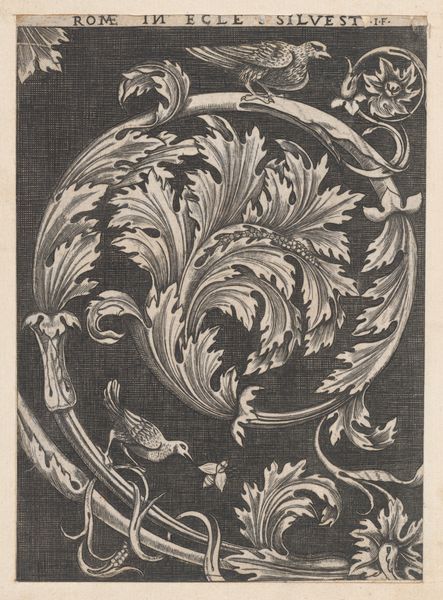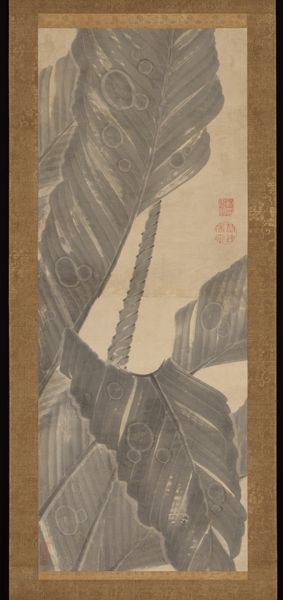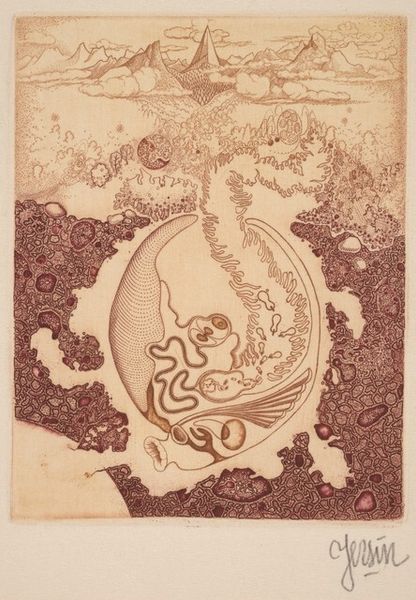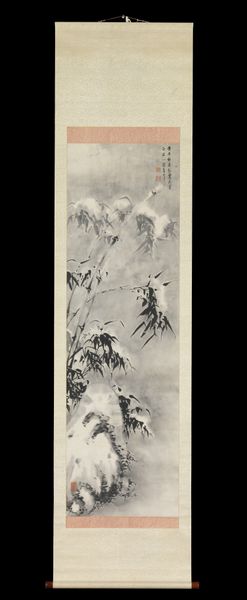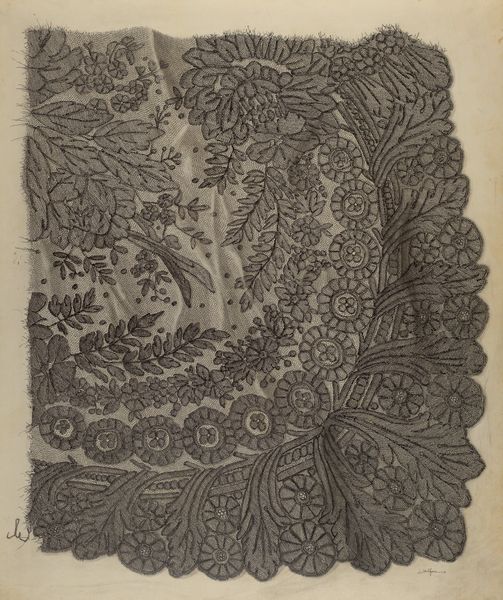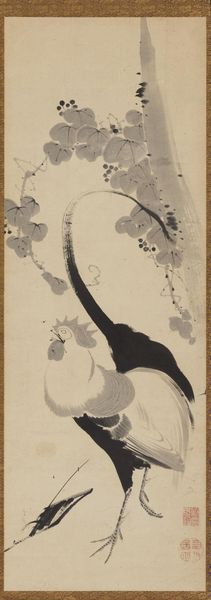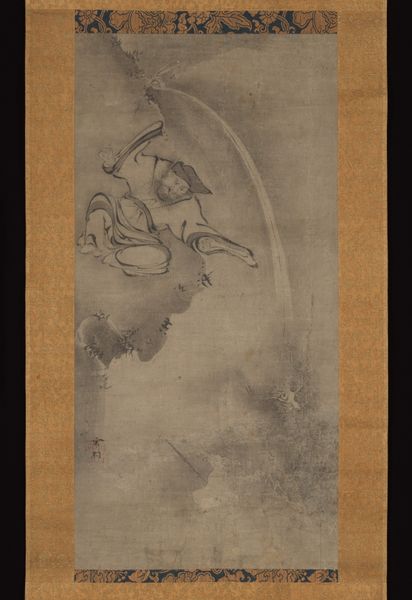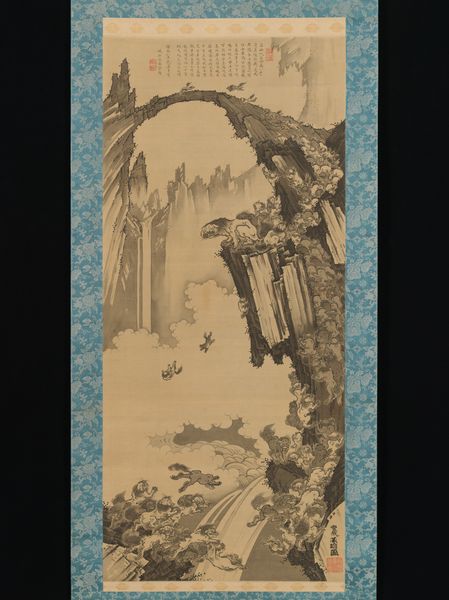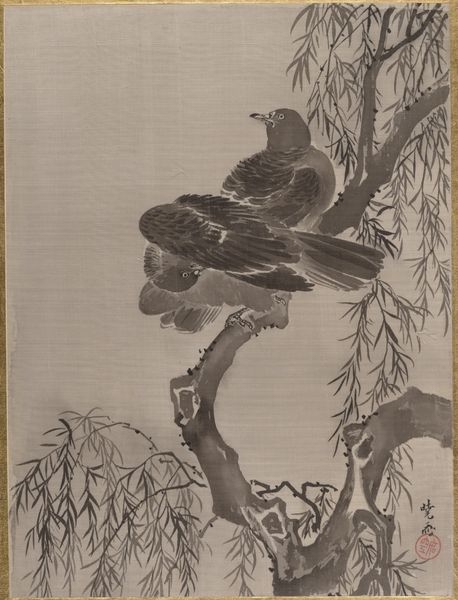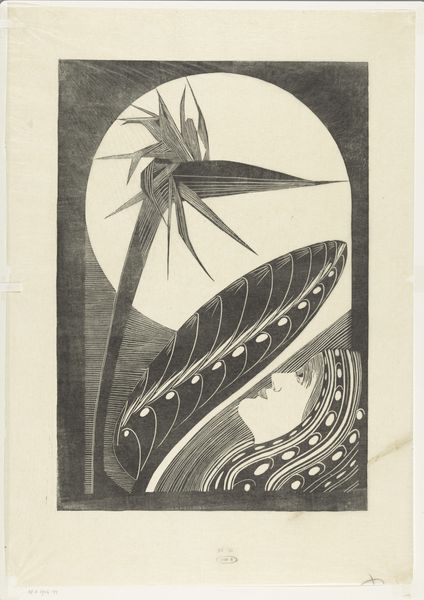
Dragon [right of a triptych of Taigong Wang c. 1760 - 1780
0:00
0:00
drawing, paper, ink-on-paper, ink
#
drawing
#
toned paper
#
asian-art
#
landscape
#
ukiyo-e
#
japan
#
figuration
#
paper
#
ink-on-paper
#
ink
#
line
Dimensions: 38 1/4 × 12 15/16 in. (97.16 × 32.86 cm) (image)73 1/8 × 18 3/16 in. (185.74 × 46.2 cm) (without roller)
Copyright: Public Domain
Curator: Look at this stunning ink-on-paper drawing titled "Dragon," created around 1760-1780 by Soga Shōhaku. It is presently held at the Minneapolis Institute of Art. Editor: My immediate impression is one of incredible energy! The dragon seems to writhe out of the paper itself, intertwined with the dramatic, swirling wave. The monochrome palette amplifies this sense of contained chaos. Curator: Indeed! Shōhaku's masterful use of ink creates depth and movement. Consider the social context—prints of this nature were part of an increasing commercial art market, making art accessible to a wider audience, not just the elite. The paper, too, and its source becomes significant when interpreting its value and impact. Editor: The linework is remarkable, almost calligraphic in its precision. Observe how he uses varied stroke widths to suggest texture, from the scales of the dragon to the foam of the wave. Its composition, with that vast, looming dragon framed by such forceful waves, is just stunning. I find it is almost perfectly symmetrical! Curator: These dragons were very important in both the symbolism and cultural meaning in art for trade and internal usage within Japan. Dragons in Japanese art are less about inherent power and instead emphasize luck, good fortune, and also can indicate the spiritual connections with water, nature, and its relationship to Imperial authority. We should examine, too, how the choice to depict a dragon conforms with social customs surrounding displays of authority. Editor: Fascinating! I hadn't considered the symbolic restraint, the use of what might seem chaotic to some, but what might bring serenity to those accustomed to it, a tension which plays out effectively in the restricted tonal range. But the drama in the waves, the controlled application of ink...it all converges into an impactful display of creative intention! Curator: Absolutely! It gives you some things to ponder over its relationship to consumption, labor, access, authority, nature and craft while using basic materials. It really encourages us to reevaluate historical artistic value beyond what we immediately see as pretty! Editor: Yes, understanding his formal strategies unlocks layers of meaning and enhances our viewing experience of how culture affects aesthetic form, while examining formal choices emphasizes the intent of what to represent with what is available!
Comments
No comments
Be the first to comment and join the conversation on the ultimate creative platform.

